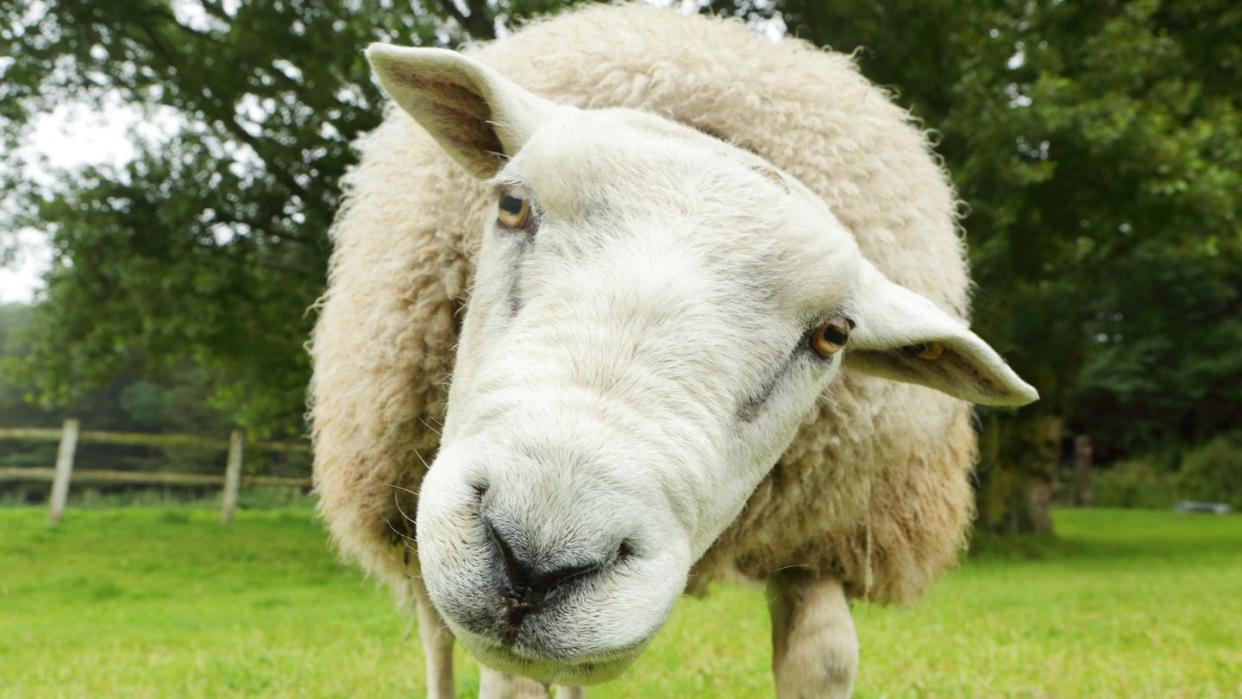These Sheep Walk in a Perfect Circle Together, and It’s Probably a Hoax

A video depicting sheep walking in a neat circle appears to be doctored.
Viewers have suggested listeriosis, but animals with this disease are more erratic.
Listeriosis only affects animals, but listeria also disproportionately affects elderly and pregnant people.
In a recent viral video, a herd of sheep appears to move together in a very determined circle. Some have suggested it is listeriosis, an infectious bacterial disease that affects one side of the brain and can cause circling. It could also be zoochosis, a psychological condition that affects captive animals. But others say this circling is far too orderly and neat for a group affected by a brain disease, which is unlikely to affect so many animals the exact same way. There’s no way to diagnose an internet video, but we can at least explore some possibilities.
🐏 You love nature’s mysteries. So do we. Let’s dive deep into them together—join Pop Mech Pro.
The video, shared by Twitter user @Billyhottakes, cites People’s Daily China—an arm of Chinese state-owned media. I’ll be honest: it looks doctored. If you have any experience with agriculture and how these things are done, the sheep look like they’re walking around something you’d find on a farm. The video is super low quality, and the circle is a slightly different color than where the sheep are walking around it. I’m just saying, I’m not at all convinced.
People in the replies immediately began saying the sheep are experiencing listeriosis. This is an infection, also called listeria in humans, caused by the bacterium Listeria monocytogenes. The CDC says it’s ten times more likely to affect pregnant people, and the infection can cause miscarriage, stillbirth, and dangerous preterm labor. We are in the midst of a listeria outbreak that has already caused at least one miscarriage.
It can even make newborn babies sick. All of this is why you’ve heard pregnant people shouldn’t eat runny (unpasteurized) cheeses or deli meats—both especially vulnerable to Listeria monocytogenes and not cooked again before eating. The current outbreak has been partly traced to a Brooklyn deli not just once, but twice, despite them deep cleaning to an appropriate level after the first infection.
But that’s all among humans. Left to our own devices, even without a dangerous brain infection caused by bacteria, we already loosely walk in circles when told to walk straight. Human listeria is interesting, but is it relevant to these sheep?
In animals, listeria is typically called listeriosis, or even “circling disease.” It’s easy to see why this was the readymade explanation offered by many commenters online. Listeriosis (and listeria in humans) is a bit of a lottery ticket, because not all animals will develop the disease, and the disease itself can express in four ways in animals: as encephalitis, septicemia, visceral infection, and abortion. The latter is what it sounds like, while the others affect the brain, blood, and organ systems.

It’s the encephalitic form that leads to circling behaviors, scientists believe. That’s because the bacterial infection gets into one of the brain’s two hemispheres, mildly or severely inhibiting movement on that side of the body. In humans, the reason we end up walking in circles over time is because our limbs are not mirror images—one is always slightly, or even a little bit less slightly, longer than the other. But encephalitic listeriosis is a chemical thing, causing the brain signals to the limb itself to deteriorate and be less “listened to.”
Why Listeriosis Isn’t a Pat Answer
But the listeriosis theory lacks that certain something. It’s intuitive if you think about it for a second. When’s the last time you caught a cold from someone and then had exactly the same symptoms as them, down to the exact same fever, the same number of coughs or sneezes, and so forth? “Never” doesn’t feel like a strong enough word. These sheep are different ages, heights, and weights; they’re divided into two sexes; and the ewes, or females, are divided into those that have and have not given birth.
The same behavior applies to another theory people have put forward, zoochosis, which Slate defines as “a repetitive behavior that serves no obvious purpose, such as pacing, bar biting, and Gus’ figure-eight swimming. Trichotillomania (repetitive hair plucking) and regurgitation and reingestation (the practice of repetitively vomiting and eating the vomit) are also common in captivity.” It’s called zoochosis, “or psychosis caused by confinement,” according to the article.
But sheep are domestic herd animals, and there are dozens of them in the video. They’re not lonely, and they’re not seen shaking, overgrooming, or otherwise coping in an unhealthy way. Herds of sheep move together so often that they’re considered a “fluid” for the sake of physics—it’s not against their nature or alarming in itself. What’s scaring people is the circle.
Even in the video footage, we see sheep walking around each other in an orderly way. If they were disoriented and walking in organic circles, they’d likely be running into each other and otherwise acting less like polite road traffic. Their circles would not be perfect, because brain disease is not uniform or perfect. So, for now, my best guess is still that this is a doctored video of sheep walking around some kind of existing, circular obstacle. And that’s good, because listeriosis is scary stuff.
You Might Also Like
